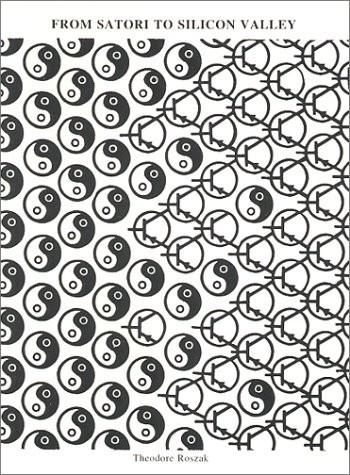
From Satori to Silicon Valley: San Francisco and the American Counterculture
by
Theodore Roszak
Published 31 Aug 1986
Who no longer remember "the Days of Rage" or "the Summer of Love". Who know Wood- stock only as a picture in their textbooks. For whom unknown quantity. Only to be expected. After all, when I was making my way through college, what did I know about Sacco and Vanzetti ... the Memorial Day the Chicago Seven (or was Massacre Time ... the it Moscow passes. Social Eight?) are an Trials . . memory is a shifting cloud. Kids awkwardly segueing into citizenhood Which their own leave ancestral traumas and triumphs behind. is as it should be. Provided they go on to better things. Will they?

Exploding the Phone: The Untold Story of the Teenagers and Outlaws Who Hacked Ma Bell
by
Phil Lapsley
Published 5 Feb 2013
YIPL obtained a copy of this memo and printed it the next month. Although Fierstein did worry that the phone company might try to shut him down, his spirits were buoyed by an ace in the hole. “Abbie lent us his lawyer Jerry Lefcourt,” Fierstein recalls. Lefcourt was a young firebrand who had made a name for himself as part of the defense team for the Chicago Seven, a group of antiwar protesters (including Hoffman) who had been arrested for conspiracy and incitement of riot in 1968. “He promised to defend us in the unlikely event that the phone company would ever prosecute us and elevate our minuscule presence to a large-scale story, which we didn’t feel they would want to do.”
…
William (Bill) 92–97, 104–105, 113–114, 116, 304–305, 331 Camp Bloomfield 155 Camp Wapanacki 136 Campbell, Duncan 389 Cap’n Crunch whistle 155, 166, 202, 209, 326, 369 Cap’n Software 329 Captain Crunch: See Draper, John Card translator, 4A crossbar 47, 174 Carson, Johnny 228 Carterfone 298–299 Case Western Reserve University 180 Cat and Canary Bird Call Flute: See Davy Crockett Cat and Canary Bird Call Flute Catalyst, Cheshire 320–321, 331 Cave drawings 158 CCIS: See common channel interoffice signaling Celebrities and blue boxes 223, 243–244 Central office 052 conference 207 AUTOVON 269 Barclay, Ralph 58–59 Black box fraud 89 CAMA-C 297 Concept of 20, 23–24 Greenstar 94 Electromechanical 44–48 Electronic 232–238 Engressia 121, 127, 131, 317 Fiddles 242 Line card 265 Loop arounds 148–149 Machine, The, impact of 160 Social engineering 177–179, 202 Simultaneous seizure 226–227 Touch-tone dialing 50, 237 Trunk lines 23–24 See also: crossbar switching system, electronic switching system (ESS), step-by-step switching Central processing unit (CPU) 234–235 Chappe, Claude 14–15 Charley board 312–315 Cheese box 101–103, 114, 127, 149 Cheney, Bill 265, 268 Chesapeake and Potomac Telephone Company 188 Chicago Seven 199 Churchill, Ray 132–133 CIA crisis line 229 Clarkson College of Technology 180 Coburn, James 191 Cochran, Jay 258, 277–278, 282 Code of conduct 169 Code of silence 144–145 Cohen, Ben 108–110, 327 Coin telephone: See pay phone Common channel interoffice signaling (CCIS) 296–297, 306, 332 Common control 45–47, 236 Communication Workers of America (CWA) 190 Competition 22, 26–27, 236, 298–302 Computer Digital circuitry 220–221 Electronic switching 233–235, 296–297, 322 Hacking 306–309, 320 Homebrew/personal 272, 276, 280–281, 306–309 Phone phreaking 313–314, 316 Condon, David 29–30, 35–40, 244–245, 277, 291, 326–327 Conference call: See 052 conference, 2111 conference, busy signal conferences, open-sleeve-lead conferences, party line conferences Congressional Research Service 96–97 Conners, Earl 305 Conventions, phone phreak 212–215, 319–321 Cordboard: See switchboard Cornell University 86, 186 Cornfeld, Bernard 243–244 Counterculture 150, 185–200, 209, 241 CPU: See central processing unit Credit card fraud, telephone 102, 193–197, 204, 241, 293 Crimson, Harvard 1, 6–8, 10, 12, 225 Crossbar switching system 42, 45–46, 49, 120, 161, 232–233 See also: #4A crossbar switch, #5 crossbar switch, crossbar tandem Crossbar tandem (XBT) 175–176, 371 Crybaby 65 Cummings, Robert 244 David, B. 2–4, 7–10, 126–129, 165 Davis Jr., Sammy 195 Davy Crockett Cat and Canary Bird Call Flute 30, 35–36, 39, 244, 327 Davy Crockett: See Condon, David Dawson, Floy 282–284, 292 DeButts, John 158, 258 Decibel, Ben 245 Defense Communications Agency 269–270 Demo gods 279 Demonstrator, touch-tone 237, 247 Desmond, John 80, 82–83 Dial, telephone, letters and numbers 32 Dialed number recorder (DNR) 314–315 Diamond, Al 149–150, 223, 328 See also: Bernay, Al Digital blue box 220–221, 383–384 Direct control 44–46 Direct distance dialing (DDD) 32, 49–50 Directory assistance 53–55, 61, 66, 124, 137, 273, 311, 335, 351 Supervision signal and 143–146 Spoofing 227–228 Discriminatory hiring practices, AT&T 189–190 Distant Early Warning (DEW) line 182, 273 Doherty, Joseph 183, 199, 231, 248, 258 Doorbell, Evan 204, 245 Doyle, Jerry 105–106, 115 Draper, John 2111 conference 163, 206 Apple Computer 312–314 Arrest, California, 1972 201, 205–209, 216–217 Arrest, California, 1976 290–294 Arrest, New Jersey, 1977 315 Arrest, Pennsylvania, 1977 314–316 Avoidance by other phreaks 245, 277, 292 BART ticket forgery 329 Captain Crunch 165–166 Charley Board 312–314 Convention, phone phreak, 1972 213–214 Defense fund 213, 215–216 Draperism 282, 315, 318–319 EasyWriter word processor 319, 329 Esquire article 171–173, 177, 179–181 FBI wiretapping via verification 249, 251–261, 267, 272–274, 276, 281–283, 287–290 Homebrew Computer Club 309 Learns of phone phreaking 150–155 National Public Radio program 230 Parole violation, 1979 318–319 People’s Computer Company 281 Personality quirks 171–172 Piggyback ride 337 President Nixon prank 228–229 Psychiatric evaluation 318–319 Tandem stacking 177 TAP, letters to 276, 319 Wozniak, Steve 221–222, 312–314 DUE (Detect Unauthorized Equipment) 188 Duffy, Thomas 204–205, 383 Dumpster diving 241, 247, 263, 286 DXing, radio 136 EasyWriter word processor 319, 329 Economics 33, 48–49, 231, 269, 297 Edfast, Roger 277–278 Eder, Chic 251–259 Edison, Thomas (inventor) 21, 262 Edison, Thomas (phone phreak) 319–321, 330 Electronic organ 142–143, 153–154, 230 Electronic switching system (ESS) 232–238, 318 Engineers 52, 91–92, 184 Engressia, Joe 2111 conference 163–165 Acker, Bill 140, 161–162, 238 Arrest, 1971 132–134 Bell Labs analysis of Esquire article 183 Blindness 117–118, 164 Blue boxing to get a job 130–134 Captain Crunch 165–166 Childhood 117–123 College 123–129 David, B. 126–128, 165 Denver 316–317 Emotional connection to telephone 119, 129 Esquire article 168, 170, 172–173 FBI investigation, 1969 127–128 For Whom Ma Bell Tolls Not 181 Isolation and loneliness 126–127, 129, 161–162 Memphis 129–134 Millington Telephone 134 Mountain Bell 316–317, 328 National Public Radio 230 Open sleeve-lead conference 127, 202 Publicity 126 Secrecy vs. openness 165, 246 Stories and Stuff 328 Verification 250 Way, Tandy 122, 127 Whistling 122–126 Wozniak, Steve 218–219 Zzzzyzzerrific Funline 328 See also: Joybubbles Entrapment 283–284, 287–288 Equal Employment Opportunity Commission 190, 297 Ernestine (Lily Tomlin character) 191–192 Esquire magazine 170–184, 199, 206, 208–210, 213, 218, 231, 247, 252, 273, 297, 327, 330, 334 ESS: See electronic switching system (ESS) Exchange, telephone 20, 23, 27, 59, 65, 250, 316, 325 000-199 exchange codes 65, 202–203 Automatic 25, 41–43, 45 Failure, PLaza 8, NYC 189 Foreign 300 Missing 9–11 Names 31–32 Numbers 31–32, 45, 47, 65 See also: busy signal conference, central office, party line conference, switchboard Execunet 300–301 Exhaustive dialing: See scanning Extensions, telephone 188, 193 Facebook 150, 158 FBI: See Federal Bureau of Investigation FCC: See Federal Communications Commission Federal Bureau of Investigation Acker, Bill, 1976 311–312 Atomic bomb plans 321 Barclay, Ralph, 1961 59–60 Bell Labs Telephone Crime Lab 182–183 Billings, MT blue box arrests 180 Blue box arrests, September 1972 215 Bookmaking 98, 100–109 Convention, phone phreak, 1972 215 Credit card calls 194–195 Draper, John, 1971–1972 180, 208, 213–214, 216 Draper, John, 1975, wiretapping of FBI 251–261 Draper, John, 1976 276–277, 282–284, 287–292 Engressia, Joe, 1969 127–128 Gudgel, Bob, 1971 181 Harvard students, 1963 78–83 Locke, Jake, 1967 8, 9, 12–13 Oklahoma, Ray, 1972 212 Memo to AT&T Chairman 258 Pyne, Charles, 1963 78–83 Sheridan, Paul 271–280, 287–290, 301 Telephone company security agents 204 Toll fraud 91 Wozniak, Steve, blue box note 223–224 YIPL/TAP newsletter 240–241, 276–277, 321 Federal Communications Commission Antitrust laws 302 Carterfone/foreign attachments 298–299 Hush-a-Phone hearing 159 Laws against telephone fraud 90 MCI 299–300, 302 Investigation into AT&T service failures 189 Investigation into AT&T discrimination 190 Rate increase request 187–188 Fettgather, Jim 147, 153–156, 163–164, 166, 170, 172, 247–248, 328 Feynman, Richard 119 Fiddle 242 Fierstein, Alan 186–187, 192, 197–200 Fifth Estate 241 Fine Arts 13 2, 7–8, 12, 71, 77, 79–80, 126, 225 Firedrake, George 280 Flash Override 270, 274 Flute 76–77 See also: Davy Crockett Cat and Canary Bird Call Flute, Tonette flute Fonger, B.
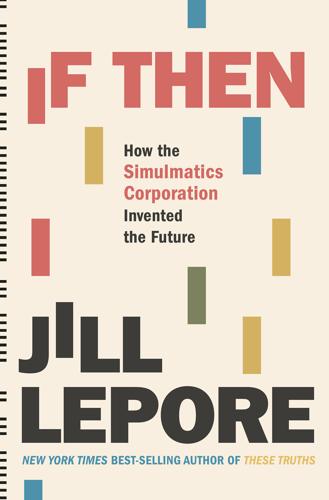
If Then: How Simulmatics Corporation Invented the Future
by
Jill Lepore
Published 14 Sep 2020
He fortified the city with twelve thousand Chicago police officers, six thousand soldiers from the National Guard, six thousand army troops, and a thousand undercover intelligence agents. They arrested hundreds of demonstrators and beat and bullied more. The leaders, who’d also organized the march on the Pentagon in 1967, went to jail: David Dellinger and Jerry Rubin were two of the Chicago Seven, charged with conspiracy and crossing state lines to incite riot. The Yippies held their own nominating convention, in Lincoln Park, and nominated a pig, handing out flyers that said, “vote pig in 68.”31 The Republicans had a pachyderm; disenchanted Democrats answered with swine. Lyndon Johnson had withdrawn from the race.
…
Board of Education, 32, 42, 75, 85, 186 Bruck, David, 298 Buckley, William F., Jr., 57, 116–17, 192, 288, 383n Bundy, McGeorge, 134, 157, 182, 212, 228, 289–90 Burdick, Carol Warren, 30, 176–78, 180 Burdick, Eugene, 27–28 — as the “Ale man,” 27, 173, 178, 186, 200 — at Berkeley, 31, 101, 173, 198 — at Center for Advanced Study in the Behavioral Sciences, 29, 31–33, 37–38, 82, 182, 340nn — childhood and education, 28, 29–31 — death, 200 — failing health, 178, 198, 200, 251 — hired by Greenfield, 26, 45, 184 — Hollywood and, 172–75, 363n, 364n — IBM 704 and, 70 — Kubrick’s lawsuit against Burdick and Wheeler, 173–75, 364n — Lasswell and, 31–33 — movie contract for The Candidate, 182–83, 365nn — opinion of Free Speech Movement, 198, 368n — reaction to Kennedy assassination, 176–80, 184, 364n — Simulmatics Corporation and, 100–101, 184–85 — Stevenson 1956 campaign, 41, 44–46, 63, 341n, 342nn — on voting behavior of Americans, 32–33, 37–38, 44–46, 341n, 342n — withdrawal from Berkeley teach-in, 200, 251 — see also specific books and stories Butler, Paul, 111 Caine Mutiny, The (film), 40 Cambridge Analytica, 1–2, 4, 91, 304, 327 Campaigns, Inc., 16 Candidates, Issues, Strategies (Pool, Abelson, Popkin), 186, 366n Candidate, The (made-for-television film), 183 Candidate, The (original title), 179, 184, 364n — see also 480, The Carson, Rachel, 78 Castro, Fidel, 141 CBS News, 1952 and 1960 election coverage, 24–25, 69, 110, 122–23, 150 Center for Advanced Study in the Behavioral Sciences — Burdick and, 29, 31–33, 37–38, 82, 182, 340nn — establishment of, 36, 58 — Ford Foundation grant, 36 — Greenfield hiring from, 44 — Lasswell and, 34, 37 — Lazarsfeld and, 34, 37, 44 — McPhee and, 146 — Pool and, 76–77 Center for International Studies, MIT, 58, 170, 191, 289, 294, 295, 299 Chaneles, Sol, 258, 259–60, 261, 263–64, 265, 290 Chayes, Abram, 268n chess — Alex Bernstein playing chess with an IBM 704, 67, 68, 70, 73, 74–75, 100 — Dartmouth artificial intelligence conference, 73, 74–75, 87 — history of man vs. machine chess match, 72–73 — Mechanical Turk, 72–73 Chicago Seven, 286 Chieu Hoi program, 227, 244 Child, Julia, 147 Chomsky, Noam — attacks on Pool and Simulmatics, 289–90, 291, 293, 295 — at Bundy’s visit to MIT, 289 — national antiwar movement leader, 290 — subpoenaed by Boston grand jury, 306 — university complicity in the war, 252–53 Civil Rights Act (1957), 75–76 Civil Rights Act (1964), 101, 182, 192, 193, 258, 259, 279 civil rights movement — Democratic party platform in 1960, 113, 120 — Eisenhower and, 75–76, 167 — John F.
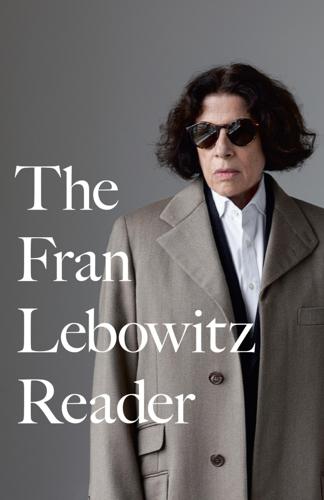
The Fran Lebowitz Reader
by
Fran Lebowitz
Published 8 Nov 1994
In the common need division (and I assure you that the word common has not been carelessly chosen) we find such things as leftish political parties, barn raisings, prides of lions, gay liberation, retirement communities, Ms. magazine, armies, quilting bees, the Rockettes, and est-type programs. Under the heading of common desire—previous parenthetical comment likewise applicable—belong rightish political parties, exercise classes, the Chicago Seven, entourages, the New School for Social Research, fun crowds, and est-type programs. That some, if not all, of the particulars in each category seem to be interchangeable is due to the fact that need and desire are, like cotton madras, inclined to bleed. The more vigilant among you may have observed that est-type programs appear in both categories.
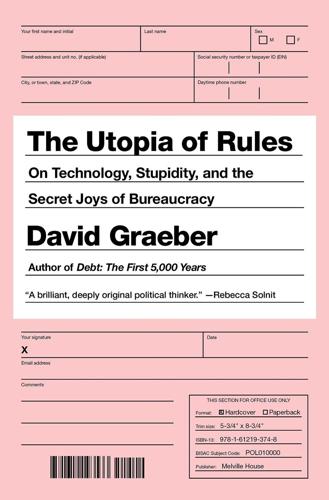
Bureaucracy
by
David Graeber
Published 3 Feb 2015
—Marx and Engels, Manifesto of the Communist Party (1847) “I said that fun was very important, too, that it was a direct rebuttal of the kind of ethics and morals that were being put forth in the country to keep people working in a rat race which didn’t make any sense because in a few years the machines would do all the work anyway, that there was a whole system of values that people were taught to postpone their pleasure, to put all their money in the bank, to buy life insurance, a whole bunch of things that didn’t make any sense to our generation at all.” —Abbie Hoffman, from the trial of the Chicago Seven (1970) Since its inception in the eighteenth century, the system that has come to be known as “industrial capitalism” has fostered an extremely rapid rate of scientific advance and technological innovation—one unparalleled in previous human history. Its advocates have always held this out as the ultimate justification for the exploitation, misery, and destruction of communities the system also produced.
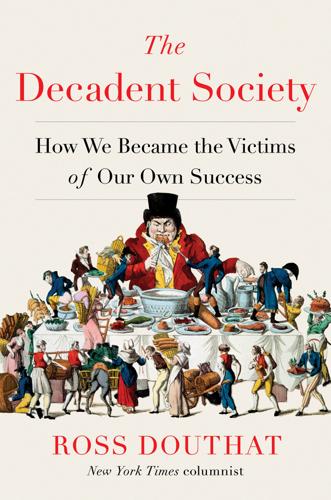
The Decadent Society: How We Became the Victims of Our Own Success
by
Ross Douthat
Published 25 Feb 2020
Progress is a comfortable disease… —e. e. cummings INTRODUCTION The Closing of the Frontier The peak of human accomplishment and daring, the greatest single triumph of modern science and government and industry, the most extraordinary endeavor of the American age in modern history, occurred in late July in the year 1969, when a trio of human beings were catapulted up from the earth’s surface, where their fragile, sinful species had spent all its long millennia of conscious history, to stand and walk and leap upon the moon. “Four assassinations later,” wrote Norman Mailer of the march from JFK’s lunar promise to its Nixon-era fulfillment, “a war in Vietnam later; a burning of Black ghettos later; hippies, drugs and many student uprisings later; one Democratic Convention in Chicago seven years later; one New York school strike later; one sexual revolution later; yes, eight years of a dramatic, near-catastrophic, outright spooky decade later, we were ready to make the moon.” We were ready—as though the leap into space were linked, somehow, to the civil rights revolution, the baby boomers coming into their own, the transformation in music and manners and mores, and the hopes of utopia percolating in Paris, Woodstock, San Francisco.
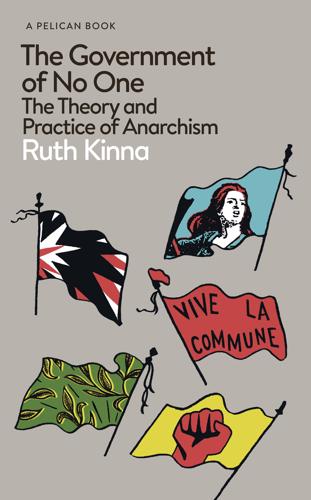
The Government of No One: The Theory and Practice of Anarchism
by
Ruth Kinna
Published 31 Jul 2019
He attended Oberlin College, Ohio, and the University of Cincinnati before working as a sports reporter for the Cincinnati Post and attending Berkeley. He became Project Director of the 1967 100,000-strong anti-Vietnam March on the Pentagon. In 1968 he was ejected from the US House of Representatives Un-American Activities Committee and stood trial as one of the Chicago seven after disrupting the 1968 Democratic Convention. He was acquitted of conspiracy and charges of incitement were quashed on appeal. Do It! Scenarios of the Revolution was published in 1970. Rubin popularized the mantra ‘Don’t trust anyone over 30’ and described himself as a perpetual adolescent.
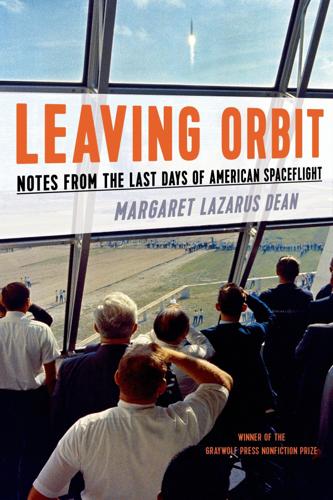
Leaving Orbit: Notes From the Last Days of American Spaceflight
by
Margaret Lazarus Dean
Published 18 May 2015
That his sentences already were speedy, febrile, and unforgettable only intensified my twilight nightmares: Presumably, the moon was not listening, but if, in fact, she were the receiving and transmitting station of all lunacy, then she had not been ignoring the nation since. Four assassinations later; a war in Vietnam later; a burning of Black ghettos later; hippies, drugs, and many student uprisings later; one Democratic Convention in Chicago seven years later; one New York school strike later; one sexual revolution later; yes, eight years of a dramatic, near-catastrophic, outright spooky decade later, we were ready to make the moon. My first—literal—fever dreams. In my Heights piece I strained over otherwise pointless flourishes, such as boxing metaphors, which at that moment must have sounded Mailerish to me.

Why We Drive: Toward a Philosophy of the Open Road
by
Matthew B. Crawford
Published 8 Jun 2020
This led to “scrappage fever” in fifteen states in the early 1990s, after passage of the Act. Where there is demand, a supply of old cars must be found. This could have an unfortunate, predatory look to it if not given a gloss of expert consensus; one must bring government and NGO types on board. So, for example, Lucsko writes that in Chicago seven regional oil companies teamed up with General Motors, the Environmental Defense Fund, and the Illinois EPA to destroy old cars. In 1994, the California Air Resources Board got very zealous indeed, urging a statewide program to destroy seventy-five thousand vehicles per year. Many of these scrappage programs dictated that no parts be harvested from the cars before they were shredded; the goal was total destruction.
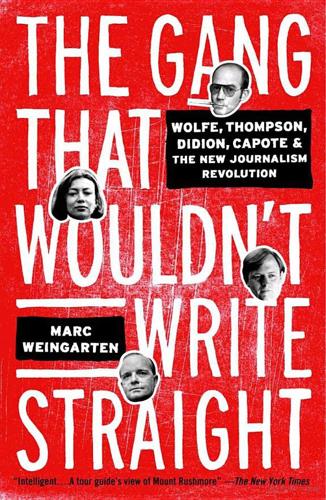
The Gang That Wouldn't Write Straight: Wolfe, Thompson, Didion, Capote, and the New Journalism Revolution
by
Marc Weingarten
Published 12 Dec 2006
In 1969 he defended the Biltmore Seven, a clutch of radicals who were arrested for trying to firebomb the Biltmore Hotel while Governor Ronald Reagan was giving a speech inside. To Acosta, guilt or innocence was beside the point; due process should be accorded to anyone who had to defend him- or herself in a court of law. He became the Latino equivalent of white civil rights lawyer William Kunstler, who had defended the Chicago Seven in the wake of the violent clashes between cops and protesters at the 1968 Democratic convention. Acosta first encountered Thompson just prior to his Los Angeles move, during a 1967 trip to Aspen. Beset by a chronic ulcer and distraught over the death of his secretary, Acosta was tipped off by his client John Tibeau to a cure located somewhere in Aspen, and hoped to relocate there and restore himself to health.
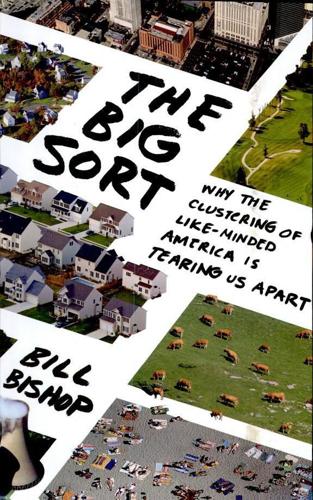
The Big Sort: Why the Clustering of Like-Minded America Is Tearing Us Apart
by
Bill Bishop
and
Robert G. Cushing
Published 6 May 2008
Grace Slick originally wanted to name her daughter god but settled for China. Tricia Nixon married a Republican presidential aide on the White House lawn. In 1970, when Slick was invited to a White House reception for Nixon's fellow Finch College alums, the Secret Service stopped the singer when she tried to bring along her "bodyguard," Yippie founder and Chicago Seven defendant Abbie Hoffman. (The two said they intended to spike the president's iced tea with LSD.) Unless advertisers could learn to distinguish the composer of "White Rabbit" from the president's daughter, O'Toole wrote, marketing research was useless. O'Toole argued that statistics on income, age, and education had lost relevance because there had been a "Revolution of the Individual" in the United States.
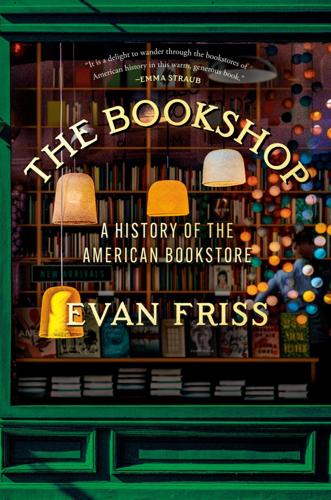
The Bookshop: A History of the American Bookstore
by
Evan Friss
Published 5 Aug 2024
The police once confiscated hundreds of books he had left out overnight, covered by a tarp. These were especially valuable, as they had belonged to William Kunstler. Kunstler and Mysak had both been lawyers. Mysak had long since been disbarred, but Kunstler was among the most renowned attorneys in the country, having defended the Chicago Seven, the Attica prison uprisers, and H. Rap Brown, whose trial was interrupted when his friend Feather, a Drum & Spear bookseller, was killed by a bomb. Kunstler was also a friend to sidewalk booksellers. As two Sixth Avenue sellers remembered, he promised the officers who had thrown their books in the garbage that if they did it again, they’d “have to deal with him.”

Behave: The Biology of Humans at Our Best and Worst
by
Robert M. Sapolsky
Published 1 May 2017
W., 632 Bush, George W., 403, 443, 454 bystander effect, 94–95 Cagots, 401 CAH (congenital adrenal hyperplasia), 215–18 Cajal, Santiago, 681, 684, 688 calcium, 140 Calhoun, John C., 285, 298 California Caverns, 160–61 California Verbal Learning Test (CVLT), 48n Calley, William, Jr., 656, 657, 658n Camp David Peace Accords, 16n Cantor, James, 597 Carnegie Medal, 520 Carrion, Victor, 195 Carter, Sue, 110, 112 Caspi, Avshalom, 254 catechol-O-methyltransferase (COMT), 256–58 categorical thinking, 5–9 causation, 599–600 compulsion and, 593 multifactorial, 602–3 cave paintings, 556, 556, 557 CBT (cognitive behavioral therapy), 61 Ceauşescu, Nicolae, 201 cells, 703, 703 red blood (RBCs), 680, 680, 681 Chagnon, Napoleon, 312–14 Champagne, Frances, 221 charitability, 115, 370, 548–50 Charlie Hebdo, 554 cheating, 324, 449, 492, 514–20 reciprocal altruism and, 344–53 Cheney, Dorothy, 337–38 Chestnut, Joey, 431 Chicago riots, 472 Chicago Seven, 396n childhood, children, 7, 8, 21, 174–222 adolescence, see adolescence class differences and, 207–9 in collectivist vs. individualist cultures, 206–7 compassion in, 527–28 culture and, 202–10 in cultures of honor, 207 developmental stages in, 174–87, 177, 479 empathy in, 179–81 hospitalization in, 189 marshmallow test and, 185–87 media violence and, 198, 206–7 neighborhood and, 205 parenting and, see parents, parenting peers in, 204 play in, 204–5 Us/Them-ing in, 391–92 childhood adversity, 194–201 abuse, 193–94, 254 by stepparent, 367–68 biology and, 194–97 bullying, 199–200, 431 observing violence, 197–98 poverty, 195–96 resilience and, 200 in Romanian institutions, 201, 201 serotonin and, 254–55 child labor, 508, 615 child soldiers, 156n, 630–31, 631 Chimpanzee Politics (de Waal), 444 chimpanzees, 111, 269–70, 270, 316, 317, 325, 365, 717 conformity in, 457–58, 470 observational learning in, 523–24 trust and, 393 Us/Them and, 389 yawning in, 457n China, 414, 415, 654 Chomsky, Noam, 384 chromosomes, 223 Chuck E.
…
And the prime minister of Israel tells his cabinet, “I have good news and great news. God exists, and he’s going to destroy the Palestinians for us.” * These scenarios of members of ethnic, religious, or racial groups eager to publicly punish a shameful in-group member can cut both ways—which behavior constitutes acting shamefully? During the 1969 Chicago Seven trial, presided over by a Jewish judge, Julius Hoffman, the chief provocateur of the defendants, the Jewish Abbie Hoffman (no relation), would insult and taunt the judge by yelling, “You are a shanda fur die goyim [Yiddish for “disgrace in front of the gentiles”]. You would have served Hitler better
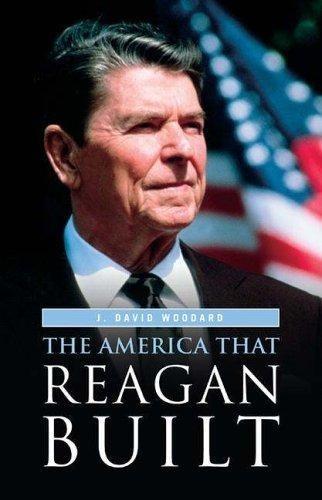
The America That Reagan Built
by
J. David Woodard
Published 15 Mar 2006
Let’s just try to work it out.’’26 The Rodney King videotape, and consequent trial of four police officers that ignited the riots, was heralded as yet another ‘‘Trial of the Century’’ in America. It joined the Sacco-Vanzetti trial (1921), the John Thomas Scopes ‘‘Monkey’’ trial (1925), the Lindbergh kidnapping (1935), the trial of Alger Hiss (1949–1950), the 172 THE AMERICA THAT REAGAN BUILT trial of the ‘‘Chicago Seven’’ (1968), and Lieutenant William Calley’s court martial (1971), among others, as contenders for the title. Unbeknownst to the chroniclers at the time, the decade of the 1990s would be host to yet another trial with racial overtones, one that would eclipse even that of the Los Angeles riots. On Friday, June 17, 1994, ABC interrupted its regular programming to declare: ‘‘This is a special report from ABC News.’’

Rise of the Warrior Cop: The Militarization of America's Police Forces
by
Radley Balko
Published 14 Jun 2013
The study didn’t look at drug dealers, who are more likely to be violent; their violence stems from the fact, however, that the drugs they’re dealing are prohibited. 59. Baum, Smoke and Mirrors, p. 11. 60. Todd Gitlin, The Sixties: Years of Hope, Days of Rage (New York: Bantam, 1987), p. 337. The remark was also referenced in the trial of the “Chicago Seven” DNC protesters. Transcript available at: http://law2.umkc.edu/faculty/projects/ftrials/chicago7/chicago7.html (accessed October 1, 2012). Daley has denied that this is what he said. 61. “56 Percent Defend Police in Chicago Strife,” New York Times, September 18, 1968. 62. David Farber, Chicago ’68 (Chicago: University of Chicago Press, 1988), p. 206; “Gallup Poll Finds Nixon Is Maintaining Large Lead,” New York Times, October 10, 1968. 63.
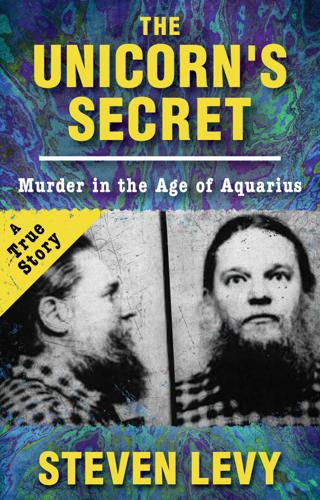
The Unicorn's Secret
by
Steven Levy
Published 6 Oct 2016
The subsequent years of silence have focused the pain on those left behind to ponder the meaning of the Unicorn’s betrayal. This was not a standard domestic killing, but something that unsettled the souls of those familiar with the principals. To some, it stood as a troubling eclipse of some of the finer values curried in two decades of liberation and self-realization. Jerry Rubin, the former Yippie and Chicago Seven defendant, puts the matter bluntly: “Ira betrayed everything I stood for and possibly everything that he stood for,” he says. His argument is that if the evidence is to be believed and Ira killed Holly, Einhorn’s violence negated fifteen years of talk about nonviolence, proplanetary motivations, and positive transformations.

Doppelganger: A Trip Into the Mirror World
by
Naomi Klein
Published 11 Sep 2023
For Ehrenreich, this was all “part of a larger withdrawal into individual concerns after the briefly thrilling communal uplift some had experienced in the 1960s … If you could not change the world or even chart your own career, you could still control your own body—what goes into it and how muscular energy is expended.” It was in this context that Jerry Rubin, onetime yippie provocateur and Chicago Seven defendant, became, in the 1980s, a proud yuppie and fitness evangelist. Explaining her own longtime, often conflicted relationship with the gym, Ehrenreich wrote: “I may not be able to do much about grievous injustice in the world, at least not by myself or in very short order, but I can decide to increase the weight on the leg press machine by twenty pounds and achieve that within a few weeks.”

The Sullivanians: Sex, Psychotherapy, and the Wild Life of an American Commune
by
Alexander Stille
Published 19 Jun 2023
Carol sang in several bands with other Sullivanians. One of them was invited to play at a protest event in Miami at the 1972 Republican National Convention that would renominate President Richard Nixon. Stars of the counterculture Abbie Hoffman and Jerry Rubin—the leaders of the Yippies and defendants in the infamous “Chicago Seven” trial—were there, as was the poet Allen Ginsberg. Carol, though, remembered little of it, as she experienced it in a drunken haze. Her drinking was starting to become a real problem. Sometimes during her sessions with Jane Pearce, when they had run out of things to talk about, they would drink together.

Of a Fire on the Moon
by
Norman Mailer
Published 2 Jun 2014
Presumably, the moon was not listening, but if, in fact, she were the receiving and transmitting station of all lunacy, then she had not been ignoring the nation since. Four assassinations later; a war in Vietnam later; a burning of Black ghettos later; hippies, drugs and many student uprisings later; one Democratic Convention in Chicago seven years later; one New York school strike later; one sexual revolution later; yes, eight years of a dramatic, near-catastrophic, outright spooky decade later, we were ready to make the moon. It was a decade so unbalanced in relation to previous American history that Aquarius, who had begun it by stabbing his second wife in 1960, was to finish by running in a Democratic Primary for Mayor of New York during the hottest May and June he could ever recall.

Appetite for America: Fred Harvey and the Business of Civilizing the Wild West--One Meal at a Time
by
Stephen Fried
Published 23 Mar 2010
When protesters announced their intention of running the Pullman porters out of town at gunpoint, soldiers helped the train pull out of the Las Vegas station. But when it arrived at Raton, the protesters there held the train for another two days. There were riots at train depots across the country. American troops were ordered to shoot civilians. In Chicago, seven strikers were killed and dozens more injured while hundreds of train cars were destroyed. Several of the White City buildings from the world’s fair were torched. Eugene Debs and other American Railway Union officials were arrested, charged with ignoring a federal injunction to stop striking, because the work stoppage was interfering with interstate commerce and the delivery of the U.S. mail.

The Zionist Ideas: Visions for the Jewish Homeland—Then, Now, Tomorrow
by
Gil Troy
Published 14 Apr 2018
One organization in particular, Breira (Alternative), challenged American Jews to express their Zionism by dissenting, anticipating the New Israel Fund, J-Street, and other contemporary organizations. Breira’s founder, Arnold Jacob Wolf, was a Chicago-born Reform rabbi who boasted about becoming “more traditional theologically than my family and more radical politically.” He revered Abraham Joshua Heschel, consorted with the Chicago Seven radicals, and marched with Martin Luther King Jr. In March 1973, Wolf published an essay in Sh’ma: The Journal of Jewish Responsibility he helped found, asserting that an increasingly militaristic, expansionist, theocratic, Jabotinskyite Israel was making him a disappointed Zionist. Later that year, resisting the American Jewish “consensus” on many issues, including Palestinian rights, he started Breira: A Project of Concern in Diaspora-Israel Relations.

Eastern USA
by
Lonely Planet
From downtown, Greyhound ( 216-781-0520; 1465 Chester Ave) offers frequent departures to Chicago (7½ hours) and New York City (13 hours). Megabus (www.megabus.com/us) also goes to Chicago, often for lower fares; check the website for the departure point. Amtrak ( 216-696-5115; 200 Cleveland Memorial Shoreway) runs once daily to Chicago (seven hours) and New York City (13 hours). The Regional Transit Authority (RTA; www.riderta.com; fare $2.25) operates the Red Line train that goes to both the airport and Ohio City. It also runs the HealthLine bus that motors along Euclid Ave from downtown to University Circle’s museums. Day passes are $5.
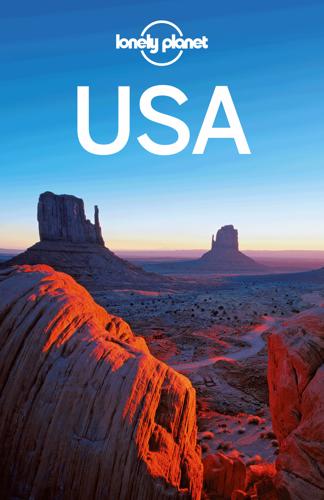
USA Travel Guide
by
Lonely, Planet
From downtown, Greyhound ( 216-781-0520; 1465 Chester Ave) offers frequent departures to Chicago (7½ hours) and New York City (13 hours). Megabus (www.megabus.com/us) also goes to Chicago, often for lower fares; check the website for the departure point. Amtrak ( 216-696-5115; 200 Cleveland Memorial Shoreway) runs once daily to Chicago (seven hours) and New York City (13 hours). The Regional Transit Authority (RTA; www.riderta.com; fare $2.25) operates the Red Line train that goes to both the airport and Ohio City. It also runs the HealthLine bus that motors along Euclid Ave from downtown to University Circle’s museums. Day passes are $5.